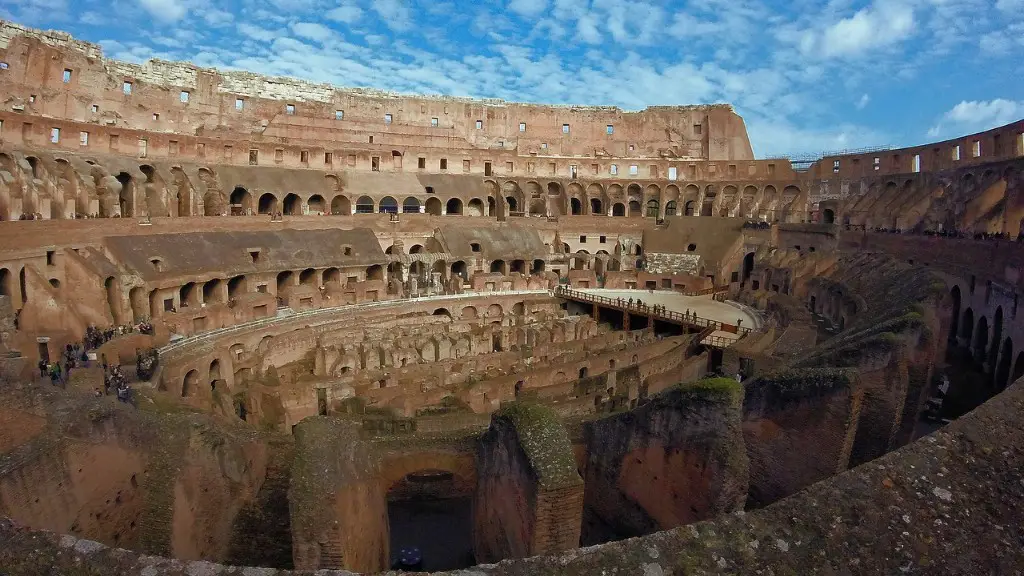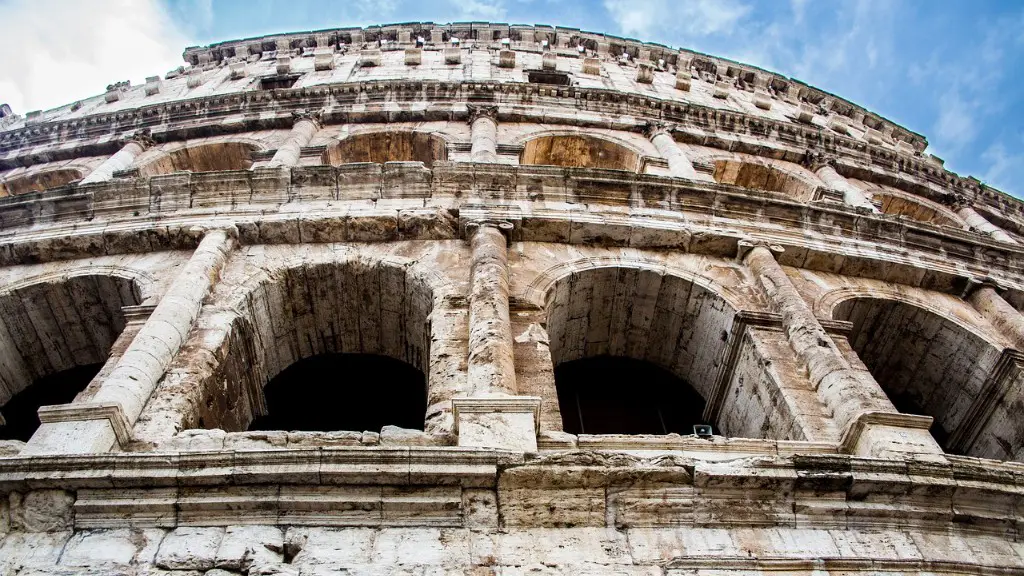The Roman Empire officially ended in 476 AD when the last Roman Emperor, Romulus Augustus, was overthrown by the Germanic chieftain Odoacer. This marks the start of the Middle Ages in Western Europe.
476 AD was the year in which the last emperor of the Western Roman Empire, Romulus Augustus, was overthrown by a Germanic warlord named Odoacer. This event is typically seen as marking the end of the Western Roman Empire, although the Eastern Roman Empire ( Byzantium) continued to exist for another thousand years.
What important event happened in the city of Rome in 476?
The Western Roman Empire officially came to an end in 476 AD when the last Roman Emperor, Romulus Augustus, was overthrown by the Germanic leader Odoacer. This event is often cited as the death blow to the Western Empire, as it marked the end of Roman rule in Italy. From then on, no Roman emperor would ever again rule from a post in Italy.
The Roman Empire was divided into two parts by Constantine’s successor, Theodosius. The Western Roman Empire, which was under the rule of his son Arcadius, fell in 476. The Eastern Roman Empire, which was under the rule of his son Honorius, survived for another thousand years.
What are the 3 factors that caused the fall of Rome in 476 AD
The fall of the Roman Empire was caused by a number of different factors, but three main reasons are usually cited: political instability, economic and social problems, and a weakening of the frontier or border.
Political instability was caused by a number of factors, including the increasing size of the empire, which made it difficult to govern; the growing power of the military, which led to a series of civil wars; and the decline of the Senate, which made it difficult to make decisions.
Economic and social problems were caused by the declining productivity of the Roman economy, which led to rising prices and a decline in living standards; the growing gap between the rich and the poor, which led to social unrest; and the decline of Roman culture, which made it difficult to maintain social cohesion.
Finally, a weakening of the frontier or border was caused by the decline of the Roman army, which made it difficult to defend against barbarian invasions; the growing power of the barbarian tribes, which led to their encroachment on Roman territory; and the decline of Roman engineering, which made it difficult to maintain and repair the frontier defenses.
Romulus Augustulus was the last emperor of the Western Roman Empire. He was deposed by the Germanic king Odoacer in 476 AD.
Augustulus was a nickname meaning “little Augustus”. He was the son of the Western Roman Emperor Petronius Maximus and the grandson of the Western Roman Emperor Valentinian III.
Augustulus was only sixteen years old when he was made emperor. He reigned for ten months before being deposed by Odoacer.
After his deposition, Augustulus was sent into exile in Campania. He died there sometime after 490 AD.
What happened to Europe after Rome fell in 476 AD?
The Middle Ages were a time of great upheaval in Europe. Following the fall of Rome, Germanic invaders raided western European cities and monasteries. Because kings were often too weak to repel the invaders, many city dwellers moved into the countryside in hopes of greater safety. This led to a decline in trade and a decline in the overall standard of living. However, the Middle Ages were also a time of great creativity, with the development of Gothic architecture and the rise of the feudal system.
The final blow to the Roman Empire came in 476 when the last Roman emperor, Romulus Augustus, was forced to abdicate and the Germanic general Odoacer took control of the city. Italy eventually became a Germanic Ostrogoth kingdom. This event marked the end of the Roman Empire and the beginning of the Middle Ages.
Was 476 AD truly the end of the Roman Empire?
There is no clear consensus among historians as to when the Roman Empire officially ended. Some believe it ended in 476 AD with the fall of the western half of the empire, while others claim that it continued in the form of the Byzantine Empire in the east.
The Western Roman Empire fell in 476 CE, but its romanitas spread to the Germanic tribes that replaced it. Even as Rome fell, it left its mark on the new kingdoms. The Germanic peoples were greatly influenced by the Romans, and their Kingdoms became more like Rome in many ways. The Germanic tribes may have been the ones to overthrow Rome, but in the end, they became more like the very empire they despised.
What period is 476 AD
The medieval era, often called The Middle Ages or the Dark Ages, began around 476 AD following a great loss of power throughout Europe by the Roman Emperor. This period saw a considerable amount of political and social upheaval, including the rise of powerful empires, the spread of diseases, and a period of great economic decline. Despite all of these challenges, the medieval era was also a time of great advancement in the arts, literature, and science.
The decline of the Roman Empire led to the rise of other forms of government in Europe, such as feudalism. The Catholic Church also became more powerful during this time. Many of the invasions of the Roman Empire were perpetrated by tribes such as the Goths, Vandals, and Huns. These invasions led to the decline of the Roman Empire and the rise of feudalism.
Why was Julius Caesar assassinated?
The senators who assassinated Julius Caesar did so out of fear that his concentration of power would undermine the Roman Republic. They saw their deed as an act of tyrannicide, or the killing of a tyrant.
The Dark Ages was a period of time after the fall of the Western Roman Empire. This time period got its name from Petrarch, a scholar during the Renaissance. He coined the term because he thought that there was a decline in culture and science. There wasn’t much written documentation from this time period so it’s hard to know for sure if this is accurate.
When was the last Caesar
Romulus Augustus was the last emperor of the Western Roman Empire. He was deposed by the Germanic chieftain Odoacer in 476 AD.
The story of the first sack of Rome is full of myth and legend, but it is most likely that it started when the young city became embroiled in a conflict with a band of Gallic Celts led by the warlord Brennus. On July 18, 387 BC, the two sides met in battle along the banks of the River Allia.
How long did it take for Rome to fall?
The fall of Rome is one of the most debated topics in history. There are many theories about what caused the fall of the great empire. Instead, the fall was slow and painful, lasting over a period of two and a half centuries. The ancient city of Rome, according to tradition, was founded in 753 BCE. This means that the Roman Empire lasted for almost 2,000 years. In that time, it was the most powerful empire in the world. But by 476 CE, the empire had fallen. So what caused the fall of Rome? There is no simple answer. There are many factors that contributed to the decline and fall of the Roman Empire.
The fall of Rome was caused by the domino effect of the Huns invading from the east. The Huns invaded the Goths, who then invaded the Roman Empire. The Roman Empire was not able to withstand the invasion, and fell.
Warp Up
The Western Roman Empire fell in 476 AD. This event is typically marked as the end of the Roman Empire. The last Roman emperor, Romulus Augustus, was overthrown by the Germanic chieftain Odoacer.
In 476 AD, the last Roman emperor was overthrown by a Germanic barbarian leader. This event marked the end of the Roman Empire and the beginning of the Middle Ages in Europe.




